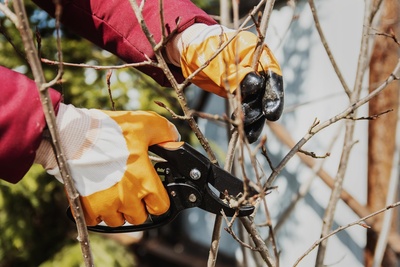Herb Gardening Guide: Growing and Using Herbs in Your Kitchen
Whether you have a vast garden or a small kitchen windowsill, herb gardening is a delightful and rewarding way to bring the flavours and scents of fresh herbs into your kitchen. In this Herb Gardening guide, we'll explore how to grow and use herbs in your kitchen, adding a touch of freshness and zest to your culinary creations.
Getting Started: Choosing the Right Herbs
Before diving into the world of herb gardening, it's essential to select the right herbs that suit your preferences and growing conditions. Some popular culinary herbs to consider include:
· Basil: A versatile herb with a rich, sweet flavour, perfect for pasta dishes, pesto, and salads.
· Rosemary: A woody, aromatic herb that adds depth to roasted meats, potatoes, and marinades.
· Mint: Known for its refreshing taste, mint is ideal for teas, cocktails, and desserts.
· Thyme: A versatile herb that complements a wide range of dishes, including roasted vegetables and grilled meats.
· Parsley: A mild, fresh herb that brightens up soups, stews, and sauces.
· Chives: Delicate, onion-flavoured chives are wonderful as a garnish or mixed into cream-based dishes.
Growing Herbs: Location and Care
· Sunlight: Most herbs thrive in sunny locations, so choose a spot that receives at least 6-8 hours of sunlight daily.
· Soil: Well-draining soil is crucial for herb gardening. If your garden soil is heavy, consider using a raised bed or container with a good-quality potting mix.
· Watering: Herbs generally prefer moderate watering. Keep the soil consistently moist but not waterlogged, as herbs may suffer from root rot in waterlogged conditions.
· Pruning: Regularly prune your herbs to encourage bushy growth and prevent them from becoming too leggy. Pinching off flowers also directs the plant's energy toward foliage production.
Using Fresh Herbs in Your Kitchen
· Flavouring Dishes: Finely chop or tear fresh herbs and add them to your dishes just before serving to preserve their flavours and aromas. Sprinkle basil over a Caprese salad, garnish a soup with a sprinkle of chives, or top a grilled steak with a sprig of rosemary.
· Infusing Oils and Vinegars: Create flavourful infused oils and vinegars by steeping herbs in them. Use these infused oils and vinegars in dressings, marinades, and drizzles to elevate your recipes.
· Herb Butters: Mix chopped herbs into softened butter to create herb-infused butter. Spread it on bread or melt it over grilled vegetables and meats for an added burst of flavour.
· Herbal Teas: Dry your herbs and use them to make refreshing herbal teas. Mint and chamomile are especially popular choices.
· Herb Ice Cubes: Freeze chopped herbs in ice cube trays with water or olive oil. Add these herb-infused ice cubes to your cooking for quick and easy flavour boosts.
· Preserving Herbs: Preserve excess herbs by drying or freezing them. Dried herbs can be stored in airtight containers and used throughout the year.
Harvesting Herbs: Best Practices
When harvesting your herbs, follow these best practices to ensure continuous growth and healthy plants:
· Leaf Harvesting: Snip the outer leaves or sprigs of the herb, leaving the centre of the plant to continue growing.
· Flower Removal: If your herbs produce flowers, it's best to remove them to direct the plant's energy into leaf production.
· Regular Harvesting: Harvest your herbs regularly but avoid removing more than one-third of the plant at a time to keep it thriving.
If you have any questions on growing herbs, pop in-store to speak to a member of our friendly team.




